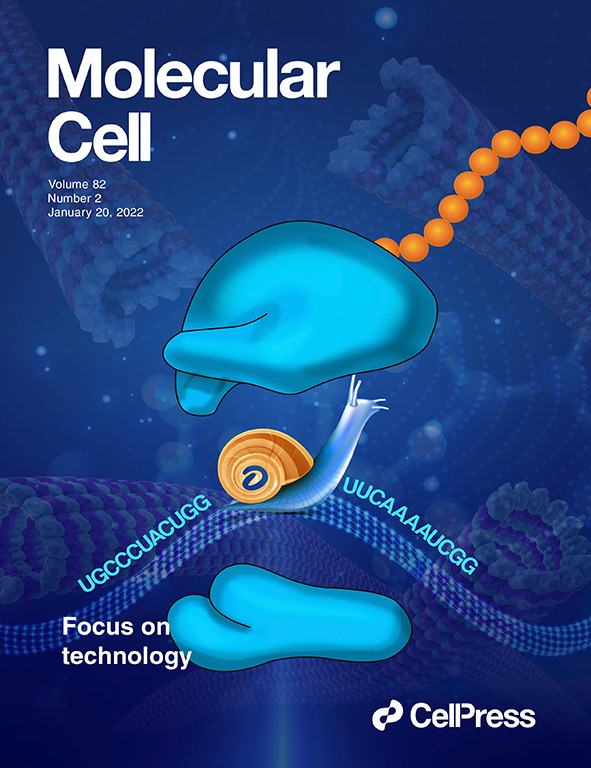Protein-O-fucosylation of coreceptors may be required for Nodal signaling in Xenopus
IF 3.7
3区 生物学
Q2 BIOCHEMISTRY & MOLECULAR BIOLOGY
引用次数: 0
Abstract
Nodal-related ligands of TGF-β family play pivotal roles for mesoderm induction and body axis formation during vertebrate early embryogenesis. Nodal ligands are distinct from most other TGF-β ligands family as they require EGF-CFC factors as coreceptors for signaling, in addition to their cognate type I and type II TGF-β receptors. In amphibian Xenopus laevis embryos, 5 Nodal-related genes (Xnr1/2/4/5/6) and 2 EGF-CFC genes (XCR1, XCR3) play roles in mesoderm induction and the accumulation of phosphorylated Smad2, while in mammalian embryos, 1 Nodal gene and 1 EGF-CFC gene (Cripto) play roles during mesoderm induction. Mammalian EGF-CFC factors are reported to be O-fucosylated at a conserved threonine residue of the EGF-like motif by protein-O-fucosyltransferase 1 (Pofut1), but this O-fucose modification is shown to be dispensable for Nodal signaling in mammalian embryos. In this study, we investigated the developmental roles of Xenopus laevis Pofut1 (XPofut1) and its potential function in Nodal signaling. We found that morpholino antisense-mediated knockdown of XPofut1 causes reduction of Smad2 phosphorylation in late blastula and axial truncation in neurula. We also found that the O-fucosyltransferase activity of XPofut1 is important in the marginal zone, but not in the vegetal pole region, of blastula. Interestingly, XPofut1 is necessary for Smad2 phosphorylation induced by Xnr1 or Xnr2, but not by Xnr5 or Xnr6. Among the Nodal signaling components, only EGF-CFC factors are known to be modified by Pofut1. Therefore, based on our current observation, we propose that XPofut1 regulates signaling of a subset of nodal ligands in pregastrulation embryos possibly through modulating the function of EGF-CFC factors.
非洲爪蟾的节点信号可能需要共受体的蛋白o聚焦。
TGF-β家族节点相关配体在脊椎动物早期胚胎发生过程中对中胚层诱导和体轴形成起关键作用。节点配体与其他大多数TGF-β配体家族不同,除了同源的I型和II型TGF-β受体外,它们还需要EGF-CFC因子作为信号传导的共受体。在两栖动物非洲爪蟾胚胎中,5个节点相关基因(Xnr1/2/4/5/6)和2个EGF-CFC基因(XCR1、XCR3)参与中胚层诱导和磷酸化Smad2的积累,而在哺乳动物胚胎中,1个节点基因和1个EGF-CFC基因(Cripto)参与中胚层诱导。据报道,哺乳动物EGF-CFC因子通过蛋白O-聚焦转移酶1 (Pofut1)在egf样基的保守苏氨酸残基上进行O-聚焦,但这种O-聚焦修饰被证明是哺乳动物胚胎中节点信号传递所必需的。在这项研究中,我们研究了非洲爪蟾(Xenopus laevis) Pofut1 (XPofut1)在发育中的作用及其在节点信号传导中的潜在功能。我们发现,morpholino反义介导的XPofut1敲低导致晚期囊胚Smad2磷酸化减少和神经鞘轴向截断。我们还发现XPofut1的O- focusyltransferase活性在囊胚的边缘区很重要,而在植物极区则不重要。有趣的是,XPofut1是Xnr1或Xnr2诱导的Smad2磷酸化所必需的,而不是Xnr5或Xnr6。在节点信号成分中,已知只有EGF-CFC因子被Pofut1修饰。因此,根据我们目前的观察,我们提出XPofut1可能通过调节EGF-CFC因子的功能来调节原肠胚形成前胚胎中一组结配体的信号传导。
本文章由计算机程序翻译,如有差异,请以英文原文为准。
求助全文
约1分钟内获得全文
求助全文
来源期刊

Molecules and Cells
生物-生化与分子生物学
CiteScore
6.60
自引率
10.50%
发文量
83
审稿时长
2.3 months
期刊介绍:
Molecules and Cells is an international on-line open-access journal devoted to the advancement and dissemination of fundamental knowledge in molecular and cellular biology. It was launched in 1990 and ISO abbreviation is "Mol. Cells". Reports on a broad range of topics of general interest to molecular and cell biologists are published. It is published on the last day of each month by the Korean Society for Molecular and Cellular Biology.
 求助内容:
求助内容: 应助结果提醒方式:
应助结果提醒方式:


